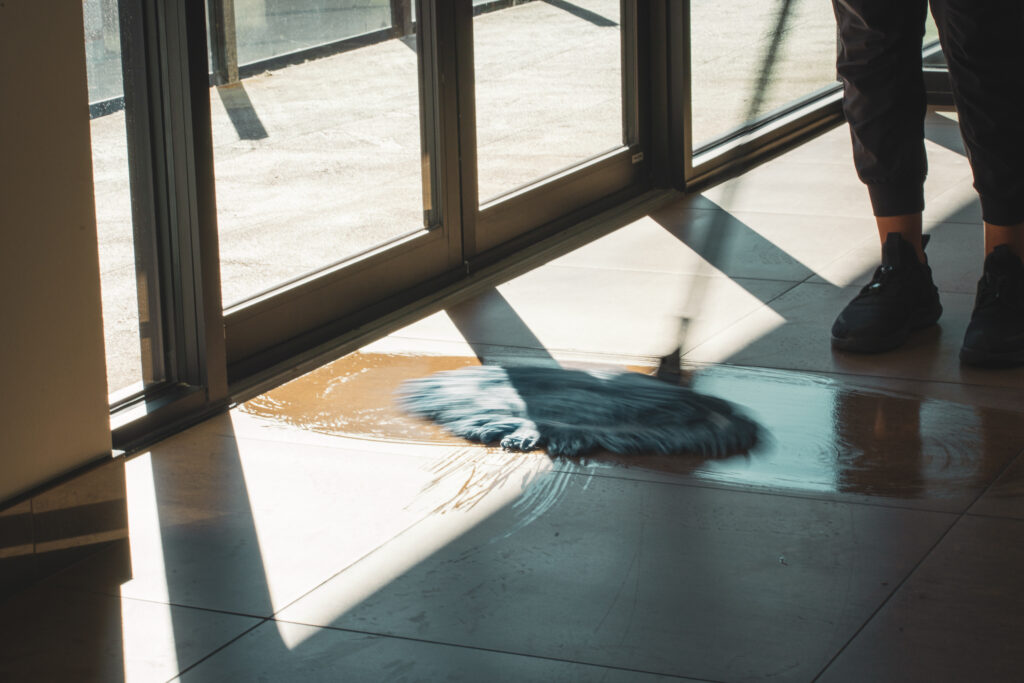7 Pro Tips for How to Mop a Commercial Floor Without Streaks
Mopping may seem simple, but in the world of commercial cleaning, the difference between a spotless finish and a streaky mess often comes down to technique. At Good Sorts, we train our Kelowna-based cleaning professionals with proven methods that guarantee gleaming, safe, and welcoming floors in every commercial space.
In this guide, we’re breaking down the exact approach we teach internally—and sharing 7 pro tips for how to mop a commercial floor the right way.
How to Mop a Commercial Floor
Before we dive into the nitty-gritty of tools and techniques, watch how one of our team leads demonstrates the basics in this internal training clip:
Why Mopping Is Often Done Wrong
Let’s face it—most people think mopping is just “bucket, water, and go.” But poor technique results in:
- Cloudy floors that don’t look clean
- Sticky residue
- Increased risk of slips and falls
- Worn-down finishes on flooring
So how do we avoid that? We follow tested steps that ensure professional, streak-free results.
1. The Right Cleaner for the Right Floor
Always choose a cleaner based on the surface. For example:
- Neutral cleaners like Stride Neutral are perfect for tile and vinyl.
- Hardwood floors require minimal moisture and gentle pH-balanced solutions.
The wrong product can leave residues, strip finishes, or cause uneven drying.
2. Don’t Skimp on or Overuse Your Cleaning Product
There’s a sweet spot. Too little cleaner won’t break down dirt. Too much can leave behind a film.
💡 Pro Tip: Some neutral cleaners are designed to evaporate cleanly—but only when used in correct dilution.
3. Wringing Is Winning
Your mop head should be damp, not dripping. If it’s too wet, you’ll leave puddles, streaks, and potentially unsafe walking surfaces.
“Give it a good twist. You want that mop head just moist enough to clean—no more.” – Kristian, Good Sorts
4. Avoid Puddles and Pooling
Uneven water distribution creates drying issues and dirt deposits. Use consistent overlapping strokes, especially in high-traffic areas.

Walk back with the mop and avoid stepping onto the just-cleaned surface to keep it pristine.
5. Hot Water Works Wonders (Usually)
When using neutral chemicals, hot water speeds up evaporation and boosts cleaning power. But double-check product labels—some specialty coatings or waxed floors require lukewarm water only.
6. Keep That Water Clean
Dirty mop water is your enemy. If the bucket looks murky or smells foul—it’s done.
Rule of Thumb:
If in doubt, change it out.
Otherwise, you’re just pushing dirt around.
7. Follow the Grain, Especially for Wood Floors
For hardwood and even stainless steel:
- Always mop with the grain to avoid visible streaks and foam build-up
- Against the grain creates resistance, bubbles, and obvious marks
This technique also preserves the material’s appearance over time.
Post-Cleaning Care: Clean Your Gear
Don’t forget the aftermath. Here’s how we wrap up at Good Sorts:
- Empty and rinse the mop bucket (in a toilet or slop sink)
- Launder reusable mop heads with a defoamer to prevent machine issues
- Dry all tools thoroughly before storing to avoid mildew
Proper maintenance = longer-lasting tools and better hygiene.
Final Tip: Multiple Passes for Soiled Areas
One pass may not cut it for heavily soiled floors. Go over tough spots again with clean water to rinse away any remaining debris or detergent.

Real Talk from Kristian at Good Sorts
“Floors streak because of tiny details—wrong cleaner, dirty water, too much pressure. Mastering the basics is the secret. That’s what we teach at Good Sorts every day.”
Final Thoughts on Commercial Mopping
Mopping isn’t just a maintenance task—it’s an opportunity to make your facility shine. With the right products, techniques, and mindset, your floors will impress clients, protect staff, and extend the life of your building materials.
Need help keeping your commercial space spotless in Kelowna? Contact Good Sorts today for a custom cleaning and maintenance plan from the experts.
FAQs About Commercial Mopping
What’s the best mop for commercial use?
Microfiber loop-end mops with wringer buckets are ideal for durability and performance.
How often should I mop in a business setting?
Daily in kitchens or entrances; 2–3 times a week in standard office areas.
Can I mop with just water?
You can, but it’s far less effective. Use a neutral cleaner to break down grime and sanitize.
Why does my floor look worse after mopping?
Likely causes: too much cleaner, dirty water, or an over-wet mop. Follow the pro steps above.
Is rinsing necessary after mopping?
Not with neutral no-rinse cleaners. For stubborn areas or sticky residue, a second pass with clean water helps.
Should I mop with hot or cold water?
Hot water works best with neutral cleaners unless the product or surface specifies otherwise.








